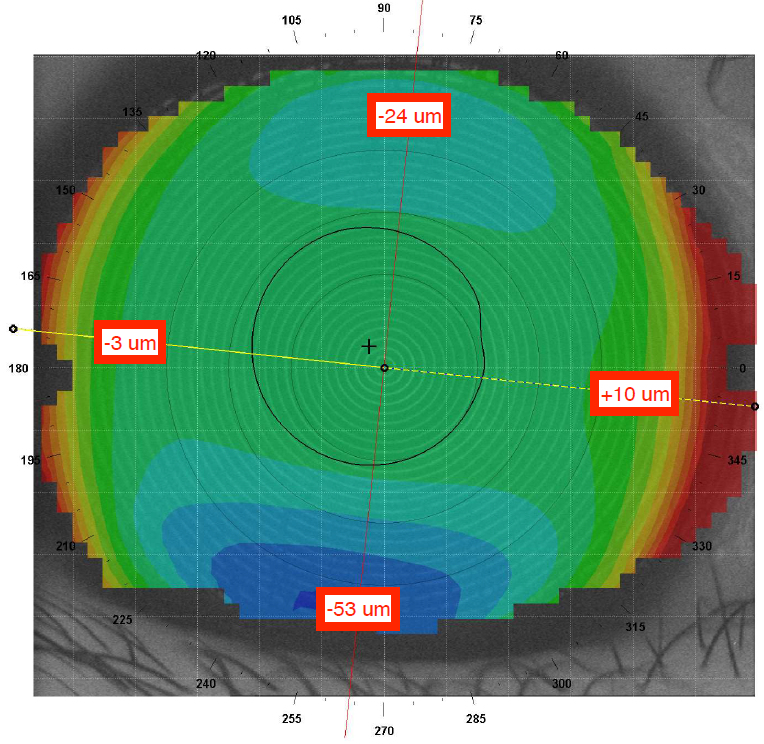Choosing When to Use a Toric Orthokeratology Lens Design
Modern orthokeratology designs allow for improved visual outcomes by providing better centration and more uniform treatment zones. To achieve these outcomes, it is critical for the reverse and/or alignment (peripheral) curves to create a semi-sealed environment with the peripheral cornea 360° to generate the proper fluid forces necessary for corneal reshaping. While spherical peripheral curves may be sufficient for most corneas, practitioners are seeing a greater need for toric peripheral designs.
Traditionally, practitioners considered 1.50D of with-the-rule corneal astigmatism to be a general cutoff point for requiring toric orthokeratology designs.4, 5 However, careful topographical analysis of the corneal eccentricities and elevation data at the principal meridians may lead to more refined results. Corneal eccentricity (e-value) is a measure of the rate of flattening from the center to the peripheral cornea. Lower e-values indicate the corneal shape is more spherical (and therefore has greater sagittal height) while higher e-values indicate a more elliptical corneal shape (and lower sagittal height).6 Eccentricity data can guide practitioners to choose more proper fitting peripheral curves.
 Figure 1: Topography map showing elevation data at 8 mm chord in each principal meridian of a cornea requiring a toric orthokeratology design. The difference in average sagittal height between the flat and steep meridians is greater than 25 um ((10 + -3)/2 – (-24 + -53)/2 = 42).
Figure 1: Topography map showing elevation data at 8 mm chord in each principal meridian of a cornea requiring a toric orthokeratology design. The difference in average sagittal height between the flat and steep meridians is greater than 25 um ((10 + -3)/2 – (-24 + -53)/2 = 42).
Elevation maps show the corneal sagittal height in reference to a best-fit sphere. It is recommended to measure elevation data in each principal meridian at an 8mm chord, which is the estimated landing point for most alignment curves. Clinical experience suggests choosing a toric design when the corneal sagittal height elevation difference at the 8 mm chord in each principal meridian is greater than 25 um.7 Thus, it is possible for highly astigmatic corneas to only require spherical peripheral curves if the astigmatism is apical/central. In contrast, corneas with minimal astigmatism may require toric peripheral curves if the astigmatism extends from limbus-to-limbus (causing greater sagittal height elevation differences at the peripheral cornea).
Advanced Troubleshooting
Some patients may have a mismatch between corneal and refractive astigmatism. In such cases, it can be advantageous to purposefully design lenses with “misaligned” spherical (or less toric) peripheral curves on toric peripheral corneas to not create a perfect 360° alignment; this avoids inducing unwanted residual astigmatism. Furthermore, advanced cases of high corneal/refractive astigmatism may benefit from software design technologies that allow the practitioner to utilize oval optic zones as well as toric base curves for further refinement of vision.

